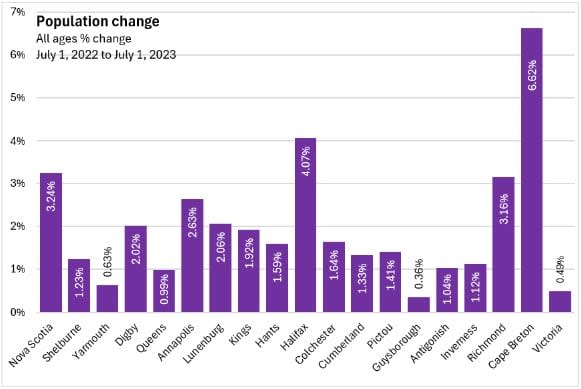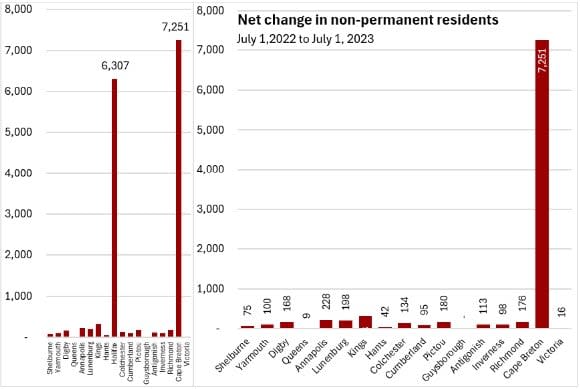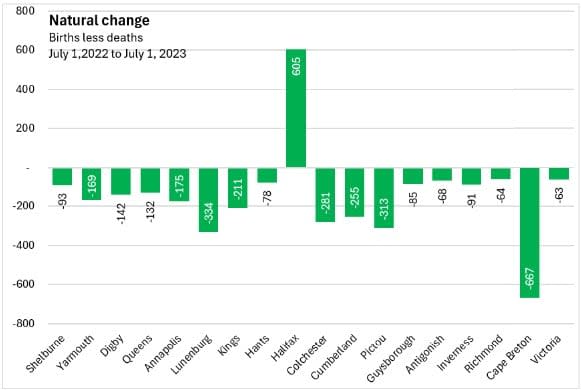CBRM growing faster than rest of N.S., getting younger in 'extraordinary' change

After decades of declining numbers and an aging population, Cape Breton Regional Municipality was the fastest-growing area in Nova Scotia last year and the population is getting younger, according to new figures from the province's Finance Department.
The numbers, based on Statistics Canada data as of July 1, 2023, show CBRM grew by 6.7 per cent, while the second-fastest-growing municipality was Halifax, which increased its population by just over four per cent.
The figures show CBRM's growth was almost entirely due to non-permanent residents, who are mostly international students at Cape Breton University.
Thomas Storring, director of economics and statistics for the Department of Finance, said that also contributed to a drop in CBRM's median age from 47.9 to 44.8.
"That is an extraordinary decline," he said. "That brings its median age back to what it was at around 2008, so it's turned the clock back 15 years in the last two years."

(Submitted by Nova Scotia Department of Finance)
Statistics Canada makes a distinction between what it calls Cape Breton County and CBRM. The county figures include the populations of Membertou and Eskasoni First Nations, while CBRM figures do not.
Storring said the First Nation numbers have shown near-steady growth over the years, but the dramatic demographic changes have mostly been a result of the changing population in CBRM.
All counties showed growth, but CBRM's was the most remarkable, he said.
In raw numbers, Halifax's population grew by 19,237 people to 492,199, representing more than 46 per cent of the province's total population of 1,058,694.
CBRM's population grew to 104,801, but totalled 109,945 when the First Nation communities were included — just over 10 per cent of the provincial total.

(Submitted by Nova Scotia Department of Finance)
Despite growth in CBRM and Halifax, there were residents who moved out of both municipalities, but stayed in Nova Scotia.
"It's not unusual for Cape Breton County to lose more people to other parts of the province than it receives from them," said Storring.
"It is unusual for Halifax and that's ... contributing to population gains in areas like Lunenburg County and Colchester County."
Elsewhere on Cape Breton Island, Richmond County added 296 residents, Inverness County increased by 202 and Victoria County grew by 38.
Statistics Canada data does not separate out towns. Port Hawkesbury's population is included in Inverness County's, but the town's census subdivision shows a slight increase in residents, Storring said.

(Submitted by Nova Scotia Department of Finance)
Halifax was the only county where the natural population grew due to having more births than deaths.
The natural population decline was largest in CBRM, where the net loss was 667 people, while Halifax's natural population increased by 605.
Immigrants who moved permanently added nearly 10,000 to Halifax's population, while CBRM's grew by 568.
Halifax added 6,307 non-permanent residents, while CBRM added 7,251.
The growth rate placed Halifax 10th on the list of metropolitan cities in Canada with increased populations last year.
The largest growth rates were in Moncton, N.B., and Kitchener-Cambridge-Waterloo, Ont., at 6.1 per cent. They were followed by Calgary at six per cent.
MORE TOP STORIES


